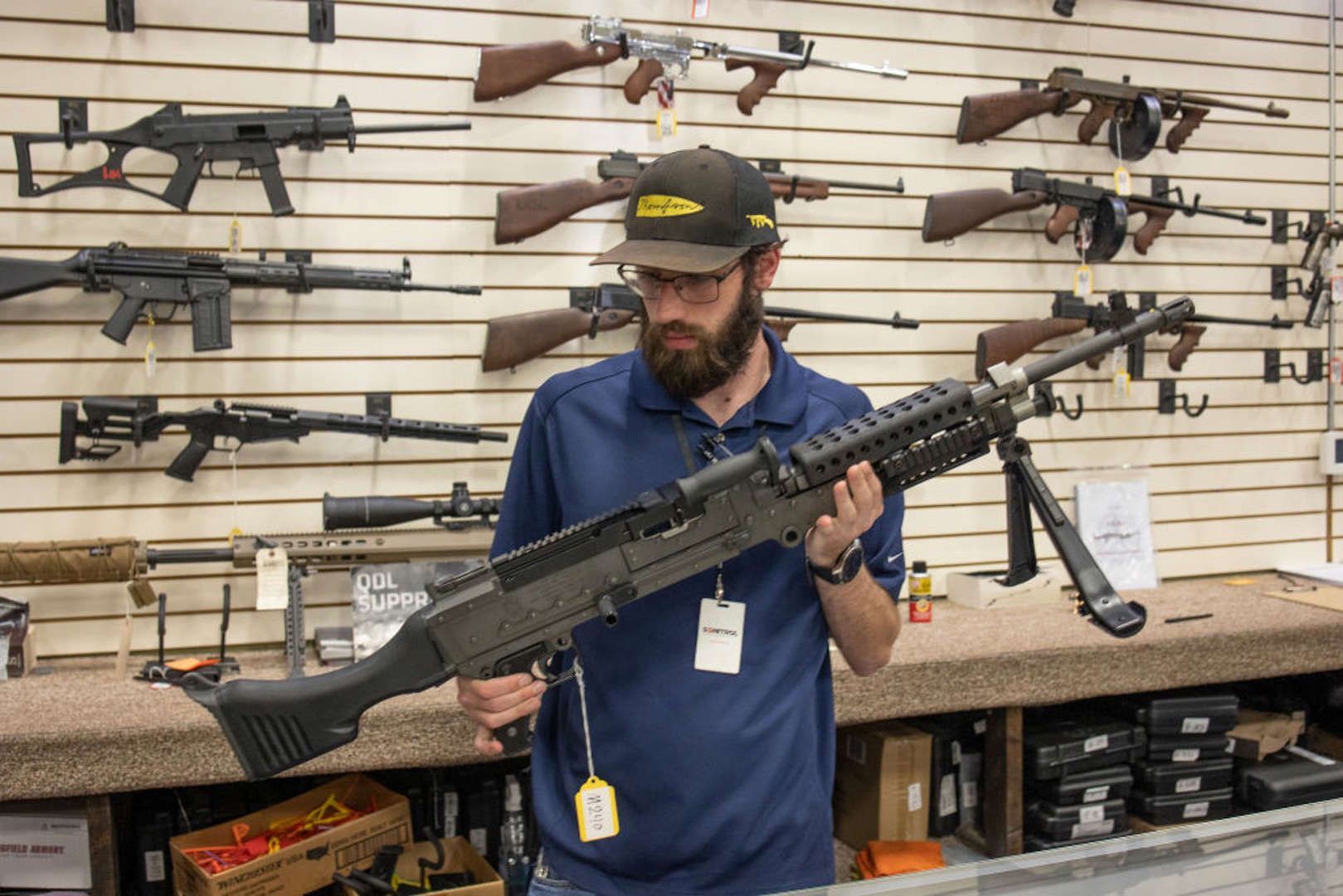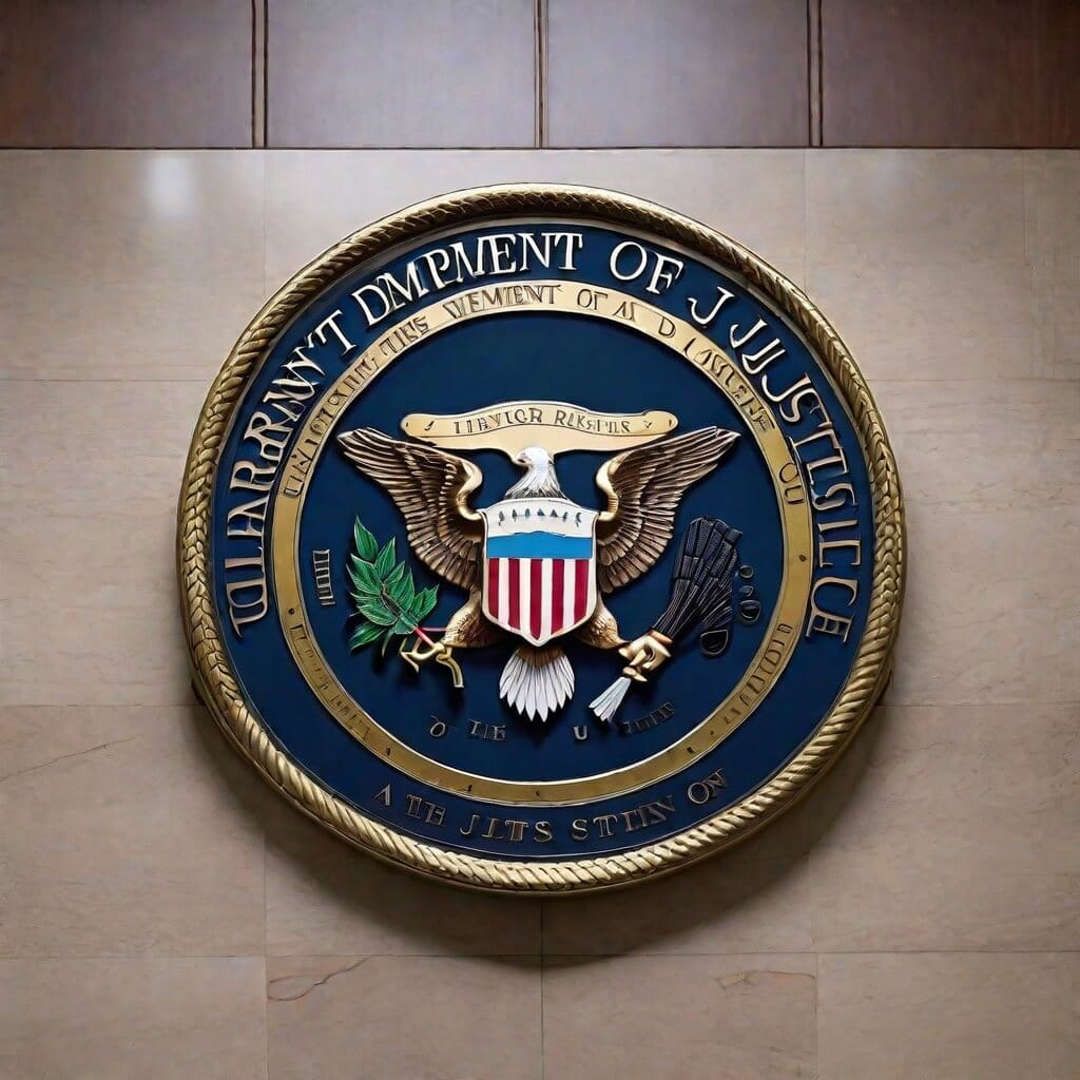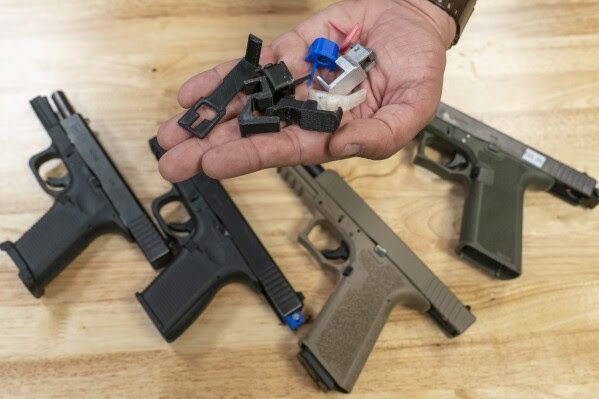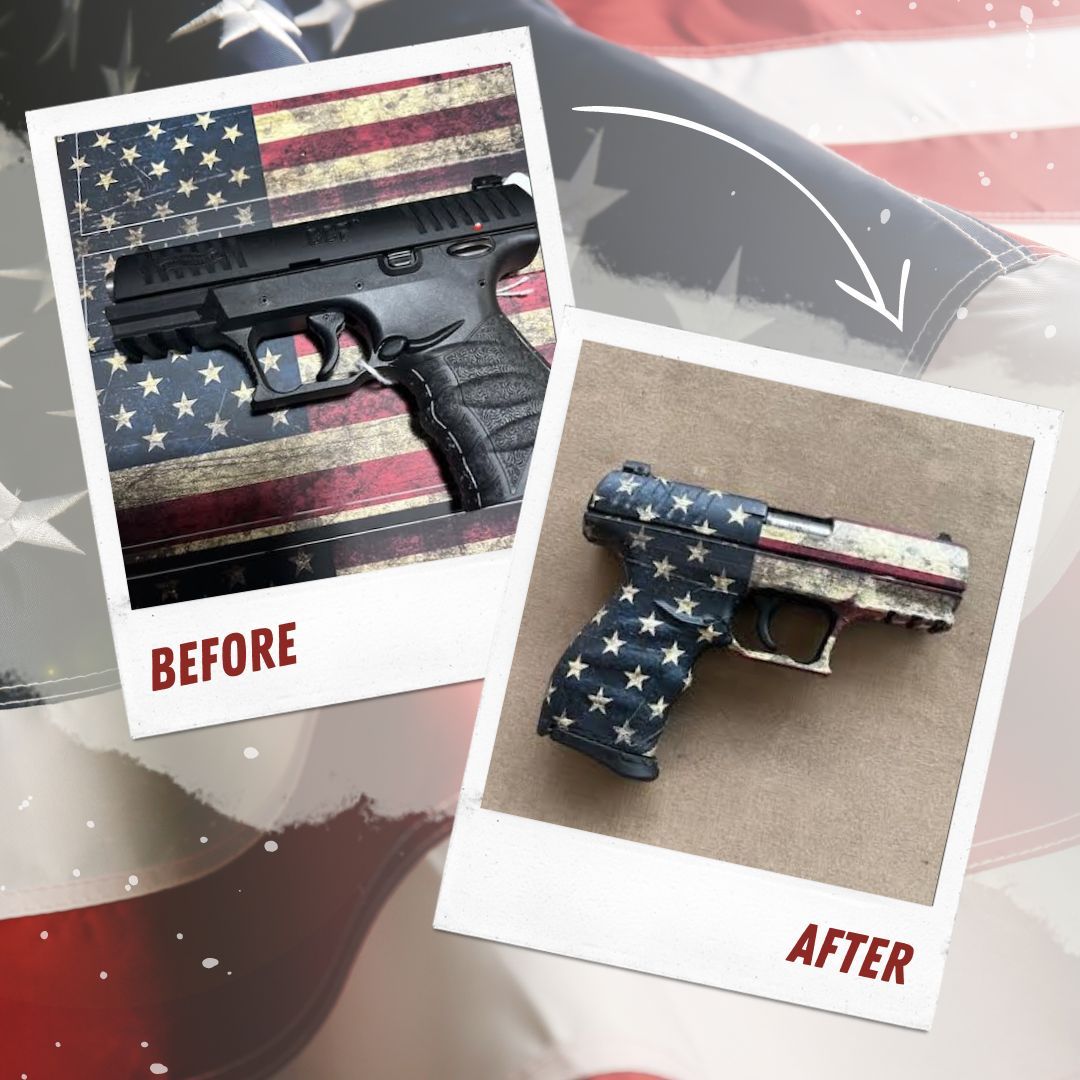Gregory Kielma • September 19, 2025
This Is Why I Always stay armed: God Bless Iryna Zarutska

Federal hate crime charge sought in Charlotte stabbing
The Center Square
Alan Wooten
(The Center Square) – When a federal charge was levied this week against Decarlos Brown Jr. in the killing of Iryna Zarutska on a Charlotte light rail, authorities said more charges were possible.
North Carolina’s chapter of the largest Muslim civil rights and advocacy organization in the nation has formally requested federal prosecutors charge Brown with a hate crime.
“We join calls for the U.S. attorney to investigate the murder of Iryna Zarutska as a possible hate crime given video footage that appears to show the perpetrator commenting on her race and gender after brutally attacking her,” the North Carolina chapter of the Council on American-Islamic Relations said in a statement. “Whenever someone commits similar acts of violence while engaging in racist or bigoted rhetoric, law enforcement should automatically investigate a bias motive.”
Zarutska, 23, was killed while aboard the Lynx Blue Line light rail train about 10 p.m. Aug. 22 alongside Camden Road near the East/West station, according to the Charlotte Area Transit System video. Brown, arrested a 15th time in as many years, is charged with first-degree murder on the state level and charged on the federal level with committing an act causing death on a mass transportation system.
While in the local news immediately, the story went viral over the weekend and into this week when Charlotte-Mecklenburg Police released video from the transit system. Congressional proposals are in the works; state Republicans in the U.S. House have requested the chief judge in the district remove the magistrate signing off on cashless bail for Brown in January; and a probe of safety and budget for the transit system is underway by the state auditor.
CAIR-North Carolina said, “Video footage from the incident reportedly shows the alleged attacker, Decarlos Dejuan Brown Jr., pacing through the train and twice saying, ‘I got that white girl.’”
The Center Square has not confirmed the comments. Video released by Charlotte-Mecklenburg Police is from cameras aboard the Charlotte Area Transit System light rail train.
General Assembly leaders planned a noon press conference connected to the stabbing.
CAIR-North Carolina said, “As we condemn Ms. Zarutska’s horrific murder and call for a hate crime probe, we also condemn those using this crime to resurrect racist talking points about the Black community. This selective outrage is dangerous, hypocritical, and racially motivated, especially given that white supremacists fall silent about other stabbings, mass shootings, hate crimes, financial crimes, rapes, and various other misconduct committed by people of all races and backgrounds. Our society must secure justice for victims of crimes, not turn them into pawns for extremists.”

Crossing State Lines With a Firearm: What to Know. Please Check The Locations You Are Traveling To. Ignorance is NOT An EXCUSE!!!!! Let's Take a LOOK Gregg Kielma Legal Gun Owners: Things You Must Never Do While Traveling Across State Lines Traveling with firearms across state lines requires close attention to federal and state laws on possession, storage, and carry. Mistakes can lead to loss of protection, criminal charges, or confiscation. Knowing local requirements and permit reciprocity helps gun owners avoid violations while driving or flying. Traveling with a loaded firearm in the vehicle Carrying a loaded firearm in a passenger area violates federal travel rules, which require guns to be unloaded, locked, and out of reach. Many states consider loaded guns in glove boxes or consoles illegal, even for permit holders. Unsecured firearms increase risks and legal penalties; storing them in a locked case away from occupants meets federal and local requirements for interstate travel. Assuming your gun is legal in every state you enter A firearm permitted at home may be restricted in other states due to differing laws on calibers, magazines, or features. Some states prohibit certain guns regardless of permits. Legal experts caution that entering a stricter state can make possession illegal. Always verify legality in both origin and destination, as safe passage rules require the gun to be lawful in both. Believing your concealed carry permit is valid everywhere Permit reciprocity is not universal; several states do not acknowledge out-of-state permits. Law enforcement officials emphasize that presuming recognition may inadvertently result in unlawful carry charges. Each state establishes unique qualification standards, training protocols, and lists of approved permits. Prior to travel, responsible firearm owners consult each state's reciprocity lists and familiarize themselves with restrictions related to carrying loaded or concealed firearms. Neglecting this due diligence can lead to immediate legal consequences, even if the firearm is otherwise legally owned and transported. Keeping ammunition in the same accessible space as the firearm Federal guidelines require storing firearms and ammunition separately when traveling across state lines. Keeping them together within reach can violate legal protections and appear unlawful. Use locked cases outside passenger access for compliance and safety. Proper storage shows responsibility and helps ensure smooth interactions with law enforcement. Storing ammunition correctly is as vital as storing firearms. Making unnecessary detours or extended stops in restrictive states Safe travel laws only protect direct transit; stopping in states with strict firearm rules makes travelers subject to local possession laws, risking immediate legal issues. Continuous travel preserves federal protection, so planning routes avoids jurisdictions with tighter regulations. Using cases that are not securely locked or durable Transporting firearms in unlocked or flimsy cases does not meet federal standards. Experts advise using hard-sided, locked cases to prevent unauthorized access and ensure safety. Soft bags can be seen as unsafe and may cause legal or safety issues during inspections. Traveling with firearms that have altered or missing serial numbers It is illegal to possess or transport firearms with defaced or unreadable serial numbers, regardless of ownership. Even accidental possession can lead to serious charges, and many states impose extra penalties for transporting such weapons. Always check that firearm serial numbers are intact and visible before travel to avoid violating regulations. Ignoring magazine or feature restrictions in certain states Some states limit magazine size or feature like folding stocks and threaded barrels. Transporting restricted components can lead to violations, even with proper storage. Review state restrictions before traveling, as prohibited magazines or accessories may result in confiscation or legal action. Understanding these rules helps ensure compliance with varying firearm equipment regulations. Relying on federal law without checking local ordinances Federal regulations set basic standards for firearm transport, but many states and cities have stricter rules for storage, possession, and transit. Legal experts note that local laws may differ from state laws, creating risks of unintentional violations. It is important to research all applicable regulations before traveling to avoid penalties and ensure smooth travel. Shipping firearms improperly across state lines Federal law states that most firearms sent across state borders must go through licensed dealers. Sending a handgun directly to someone else is against these laws and can lead to serious penalties. Experts suggest double-checking how to package, what carriers allow, and the rules at the destination before mailing any gun. By following these proper steps, you help ensure safe handling and stay within the regulations designed to protect interstate commerce. Responsible gun owners always use approved methods (FFL’s) to avoid accidentally breaking federal shipping and transfer laws.

Gun Store Etiquette: Things Not to Say and or Choose Your Words Wisely…Let’s Take a LOOK Says Gregg Kielma, FFL, Gunsmith, Firearms and First Aid Fundamentals Instructor, please understand this is something I'm very careful who purchases a firearm from me. If your saying things that would lead a reasonable person to understand you unstable, you will never purchase a firearm from me, ever. Have a firearm transferred to me? and I believe you're not stable and you pass the background check; the ATF will be visiting you. I promise I'll make the phone call to the ATF and alert them of my "gut" feeling. Please understand that I will never release a firearm to anyone that I believe has ill intentions and like I said the ATF will be paying you a visit. Let's Take a LOOK: Stepping into a gun store for the first time can be intimidating, especially if you’re not sure what to say or do. Whether you’re a seasoned gun owner or a newbie, there are certain things you should avoid saying to ensure your visit is smooth, respectful, and, above all, legal. Here are 20 things you should never say in a gun store. 1. Making Politically Charged Statements A gun store is not the place for heated political debates or rants. Whether passionate about your views or just looking to stir the pot, save it for a more appropriate venue. Dropping political bombs can make employees and fellow customers uncomfortable and distract from the focus of the store, which is safety, respect, and firearms. 2. Comparing Firearm Terms to Video Game Relating real firearms to those in video games might come off as not taking the responsibilities of handling a firearm seriously. Real guns come with critical safety and ethical considerations that should be respected, showing the staff, you understand the gravity of owning and using firearms. 3. Asking to Disassemble Firearms Resist the urge to disassemble a gun unless you’ve got permission from the staff. Doing so without permission can make you seem suspicious or disrespectful of the store’s property. If further clarification regarding a firearm is required, please seek guidance from a qualified individual. 4. Making Threats or Jokes About Using Weapons Any talk of using weapons on people or property, even in jest, is a serious no-go. Such comments aren’t just in poor taste; they could land you in legal trouble. Gun stores promote safety and responsible ownership, so keep conversations respectful and focused on legal use. 5. Questioning the Legality of Store Practices Implying that the store’s illegal or unethical practices without evidence can cause unnecessary tension. Gun stores operate under strict regulations. Ask directly and respectfully to maintain a positive environment if you have genuine concerns. 6. Using Technical Jargon Incorrectly Throwing around firearm terms incorrectly can lead to misunderstandings. Clear communication is key. If you’re unsure about something, ask. It’s better to gain accurate information than to confuse the situation. 7. Making Unfounded Complaints About Gun Quality Critiquing firearms based on hearsay or brand stereotypes doesn’t help anyone. Share your experiences if they’re based on fact, not rumor. Constructive feedback is appreciated, but unfounded complaints can undermine the store’s atmosphere. 8. Asking About Illegal Modifications Asking store staff about illegal firearm modifications can make them uneasy and may lead to significant legal trouble. Keep the conversation within the bounds of the law and respect the responsibilities of firearm ownership. 9. Asking About Loading a Weapon with Live Ammo Never ask if you can load a firearm with live ammunition inside a gun store. This request is a serious concern for safety. Learn how firearms work through safe demonstrations or safety courses instead. 10. Requesting Armor Piercing Ammo Casually inquiring about military-grade armor-piercing rounds can raise eyebrows. These types of ammo are subject to strict regulations. Ask about the purpose and legality of the ammo you’re interested in to ensure you’re making a legal purchase. 11. Expressing Surprise About Background Checks Acting shocked about background checks or suggesting someone else complete the paperwork or payment for you raises red flags. It’s standard procedure for ensuring responsible firearm sales. Trying to sidestep this process questions your eligibility and puts staff in a tough spot. 12. Discussing Illegal Drug Use Mentioning illegal drug use while filling out firearm purchase paperwork is a definite no-go. This directly affects your eligibility to buy a gun. Keep the conversation clean and focused on the task at hand. 13. Inquiring About Suppressors for Illegal Asking about getting a suppressor for illegal activities, like poaching, is a major misstep. Respect the legal uses of suppressors and approach conversations with ethical use in mind. 14. Mentioning Intent to Commit Crimes Discussing any intent to use a firearm for crimes or settling disputes is out of bounds. Gun ownership comes with serious responsibilities. Keep conversations focused on legal, safe, and responsible use. 15. Attempting a Straw Purchase Suggest you’re buying a firearm for someone who isn’t legally allowed to own one is illegal. If you’re not the end user of the gun, avoid any suggestions that could be interpreted as a straw purchase. 16. Joking About Serious Situations or Legal Obligations Treat conversations about firearm ownership with respect. Joking about safety protocols or legal requirements sends the wrong message. A gun store is a place for learning and serious discussion. 17. Bragging About Skirting Laws Talking about dodging gun laws isn’t clever; it’s risky and disrespectful. Respect the process and understand the weight of gun ownership to ensure everyone’s safety. 18. Negotiating Price as if It’s a Yard Sale Treating a gun store like a garage sale and trying to haggle over prices undermines the store’s pricing structure. Respect the prices that reflect the quality, safety standards, and legality. 19. Wearing Inappropriate Attire or Disguises Showing up in a gun store with attire that screams, “I’m up to no good,” can create unnecessary tension. Stores prioritize safety and security. Keep your look straightforward and respectful to maintain a positive environment. 20. Insisting on Handling Firearms After Being Denied If the staff decides it’s not a good time for you to handle a firearm, respect their decision. Pushing the issue shows a lack of respect for the store’s policies and safety protocols.

Another Case of "Why Would Anyone Own a Gun?" Bay Sheriff: Man shoots, kills home invader The Bay County Sheriff’s Facebook page has a little more information: The Bay County Sheriff’s Office received a 911 call at about 6:05 am today , May 26, 2020, in reference to a home invasion burglary. Deputies responded to 2319 Mound Avenue, Panama City, to find a man, shot, on the floor inside the home, a handgun on the kitchen counter. EMS responded and pronounced the man dead at the scene The residents, a man in his 70’s, and his wife , stated to deputies that the husband had been outside in front of the home when he saw the man walking down the street, acting erratically. He was screaming and swearing, and, according to witnesses, acting very aggressively and erratically. The man walked down the husband’s driveway and approached the husband in a threatening manner. The husband went into the garage and then into the house to get away from the man, but the man followed, beating on the door to the house. The man then went to the front door, which was glass, and busted the glass and made entry. The man knocked the wife to the ground, got on top of her, and was beating her about the head. The husband stated he felt he could not physically stop the intruder, so he went upstairs to get his firearm. He shot the firearm multiple times, ending the threat. The wife was taken by EMS to a local hospital for treatment of her injuries. Picture above: Picture of the front door that was broken through: That’s why people own guns for self-defense and are a little torqued when told that owning a gun for that purpose is paranoid and dangerous.

Wayne County Man Sentenced to Prison for Federal Gun Crime Tuesday, December 9, 2025 U.S. Attorney's Office, Southern District of West Virginia CHARLESTON, W.Va. – Randy Price, 52, of Wayne, was sentenced on October 2, 2025, to eight years and one month in prison, to be followed by three years of supervised release, for being a felon in possession of a firearm. According to court documents and statements made in court, on July 16, 2019, a law enforcement officer conducted a traffic stop of a vehicle driven by Price in Charleston. Price attempted to flee on foot but was captured. Law enforcement seized a Raven Arms MP-25 .25-caliber pistol from the vehicle. Federal law prohibits a person with a prior felony conviction from possessing a firearm or ammunition. Price knew he was prohibited from possessing a firearm because of his prior felony convictions for involuntary manslaughter and aggravated robbery in Cuyahoga County, Ohio, Court of Common Pleas on June 28, 2002. United States Attorney Moore Capito made the announcement and commended the investigative work of the Bureau of Alcohol, Tobacco, Firearms and Explosives (ATF) and the Charleston Police Department. United States District Judge Joseph R. Goodwin imposed the sentence. Assistant United States Attorneys JC MacCallum and Negar M. Kordestani prosecuted the case. A copy of this press release is located on the website of the U.S. Attorney’s Office for the Southern District of West Virginia. Related court documents and information can be found on PACER by searching for Case No. 2:22-cr-97.

Everett Man Pleads Guilty to Selling Firearms Thursday, December 11, 2025 U.S. Attorney's Office, District of Massachusetts BOSTON – An Everett man pleaded guilty today to trafficking more than half a dozen firearms, including AM-15 rifles. Joao Victor Da Silva Soares, 21, pleaded guilty to one count of dealing firearms without a license and one count of conspiracy to engage in the business of dealing in firearms without a license. U.S. District Court Judge Myong J. Joun scheduled sentencing for April 1, 2026. Da Silva Soares was charged by criminal complaint in January 2025 and subsequently indicted by a federal grand jury in July 2025. Between August and September 2024, Da Silva Soares supplied firearms for sale in Eastern Massachusetts. Specifically, on Aug. 26, 2024, Da Silva Soares delivered two AM-15 rifles and sold them for $6,000 in a parking lot in Malden. On Sept. 11, 2024, Da Silva Soares participated in another sale involving a total of five firearms (consisting of rifles, pistols and a shotgun) outside a residence in Milford. The charges of conspiracy and engaging in the business of dealing firearms without a license each provide for a sentence of up to five years in prison, three years of supervised release and a fine of up to $250,000. Sentences are imposed by a federal district court judge based upon the U.S. Sentencing Guidelines and statutes which govern the determination of a sentence in a criminal case. United States Attorney Leah B. Foley; Thomas Greco, Special Agent in Charge of the Bureau of Alcohol, Tobacco, Firearms & Explosives, Boston Field Division; Michael J. Krol, Special Agent in Charge of Homeland Security Investigations in New England; and Patricia H. Hyde, Field Office Director, Boston, U.S. Immigration and Customs Enforcement’s Enforcement and Removal Operations made the announcement today. Valuable assistance was provided by the Massachusetts State Police and the Malden and Milford Police Departments. Assistant U.S. Attorney John Reynolds of the Organized Crime & Gang Unit is prosecuting the case. Updated December 11, 2025

Two Men Arrested In International Firearms Trafficking Conspiracy Wednesday, December 10, 2025 U.S. Attorney's Office, Middle District of Florida Tampa, FL - United States Attorney Gregory W. Kehoe announces the unsealing of an indictment charging Tyler Corbin (25, Tampa), Edward Noel (26, Canada), Alfredo Santana (32, Miami), Omar Singateth (24, Canada), and Arif Jhuman (39, Canada) with conspiracy to traffic firearms, trafficking in firearms, and dealing firearms with a license. The indictment also charges Corbin with possession with intent to distribute fentanyl. The indictment was unsealed following the recent arrests of Corbin and Santana. According to the indictment and court hearings, these individuals trafficked, and conspired to traffic, more than 100 firearms from Florida to Canada in 2023 and 2024. Of those firearms, 29 were recovered from Canadian crime scenes, including homicides. One firearm purchased by Corbin was recovered at the scene of a homicide 32 days after Corbin had purchased the firearm. None of these defendants are licensed to deal firearms. These arrests were the result of joint investigation by the Bureau of Alcohol, Tobacco, Firearms and Explosives and Homeland Security Investigations Miami Field Office. It will be prosecuted by Assistant United States Attorney Samantha Newman. This case is part of Operation Take Back America, a nationwide initiative that marshals the full resources of the Department of Justice to repel the invasion of illegal immigration, achieve the total elimination of cartels and transnational criminal organizations (TCOs), and protect our communities from the perpetrators of violent crime. Operation Take Back America streamlines efforts and resources from the Department’s Organized Crime Drug Enforcement Task Forces (OCDETFs) and Project Safe Neighborhoods (PSN). Updated December 10, 2025

TALLAHASSEE MAN 21 YEARS OLD SENTENCED TO FOUR YEARS IN PRISON FOR CONVERTED GLOCK MACHINEGUNS Friday, December 12, 2025 U.S. Attorney's Office, Northern District of Florida TALLAHASSEE, FLORIDA – Anthony Lamorris Davis, Jr., 21, of Tallahassee, Florida, was sentenced to four years in federal prison for two counts of possession of a firearm by a convicted felon and two counts of possession of a machinegun. The sentence was announced by John P. Heekin, United States Attorney for the Northern District of Florida. U.S. Attorney Heekin said: “Our state and federal law enforcement partners work hard every day to keep our communities safe from violent criminals like this defendant, and my office will continue to back up those efforts with successful prosecutions. The residents of the Northern District of Florida deserve safe streets and crime-free communities, and that is exactly what my office intends to achieve.” Court documents reflect that on both July 21, 2024, and October 25, 2024, officers of the Tallahassee Police Department caught the defendant in possession of a Glock firearm that had been converted into a machinegun. Davis has five prior felony convictions, including two convictions for aggravated assault with a firearm. The defendant’s prison sentence will be followed by four years of supervised release. “Taking illegal guns out of the hands of convicted felons is essential to making our streets safer. This arrest is another example of the unwavering dedication our officers show in confronting gun violence and reducing the harm it causes in our community,” said Chief Revell. “I am grateful for their commitment to this work and the determination they bring to every investigation. We will continue doing everything we can to reduce gun violence and keep our community safe.” The case involved an investigation by the Tallahassee Police Department and the Bureau of Alcohol, Tobacco, Firearms, and Explosives. The case was prosecuted by Assistant United States Attorney James A. McCain. This case is part of Operation Take Back America a nationwide initiative that marshals the full resources of the Department of Justice to repel the invasion of illegal immigration, achieve the total elimination of cartels and transnational criminal organizations (TCOs), and protect our communities from the perpetrators of violent crime. As part of its PSN strategy, the United States Attorney’s Office is encouraging everyone to lock their car doors, particularly at night. Burglaries from unlocked automobiles are a significant source of guns for criminals in the Northern District of Florida. Please do your part and protect yourself by locking your car doors. The United States Attorney’s Office for the Northern District of Florida is one of 94 offices that serve as the nation’s principal litigators under the direction of the Attorney General. To access public court documents online, please visit the U.S. District Court for the Northern District of Florida website. For more information about the United States Attorney’s Office, Northern District of Florida, visit http://www.justice.gov/usao/fln/index.html. Contact United States Attorney’s Office Northern District of Florida USAFLN.Press.Office@usdoj.gov X: @USAO_NDFL Updated December 12, 2025

Are Glock switches illegal? Gregg Kielma Thoughts from a reader of my blog, Ken B. Let's Take a LOOK. Yes, and why the hell would you WANT ONE???? At a recent event, I tried a fully automatic Glock. Guns were free to rent, but bullets cost $1–$5 each—so firing 50 rounds could be $50 or more, payable by cash or credit. The staff warned me that the fully automatic Glock fired 1200 rounds per minute and recommended a slower gun, but I tried it anyway. As he said, the ammo vanished quickly—even a brief trigger pull fired about 10 shots, making it difficult to avoid emptying the magazine instantly. Even if I was a member of a violent gang and wanted to shoot up a house, I wouldn't use a fully automatic Glock. The bullets just fly out of the gun TOO FAST to hit what you want to shoot. My daughter and I tried several fully automatic guns, spending quite a bit, but we really enjoyed it. Her favorite was a suppressed Uzi, which she shot three times. Although she didn't like guns before, the experience changed her view; now she wants a semi-automatic Glock 9mm so we can visit the pistol range together monthly. Now do I wanna go through the extreme hassle and expense of buying my own fully automatic gun — hell no. Ammo is just too expensive to use it up that fast. One hole in the target per trigger pull is plenty fun enough. If I ever need to shoot in self-defense, I must control every bullet I fire.

Former ATF Agent and Official Everytown's: Marianna Mitchem Former ATF Official Now at Everytown Pushes States to Go After Gun Dealers Scott Witner Says Gregg Kielma, as an FFL I'm concerned with the proposed restrictions and the possible laws that may hinder my business and or shut me down. Continues Kielma . I'll have more on this, this weekend. Please TAKE A LOOK at Scott Witner article, its extremely concerning.....for all of us. If you ever wondered what happens when a career ATF bureaucrat lands a soft seat at Everytown, here’s your answer. Marianna Mitchem left ATF in May 2025 and almost immediately surfaced at Everytown for Gun Safety . And she didn’t waste time easing into the role. According to one former ATF colleague, she reached out after leaving and tried to figure out how to target Glock and Glock-style pistols. That alone tells you what direction she was heading. Mitchem just helped roll out a long report titled The Supply Side of Violence How Gun Dealers Fuel Firearm Trafficking. It reads like someone trying to win an award for excess verbiage. The message, though, is simple. The report blames gun dealers for criminal violence and treats FFLs as the core problem rather than the criminals pulling the triggers. Her coauthors, Nick Suplina and Chelsea Parsons, both come from the New York Attorney General’s Office and now sit comfortably at Everytown . Together, the trio spent ample time taking shots at President Donald Trump’s support for gun rights while painting the ATF under President Joe Biden as a model crime-fighting operation. What doesn’t appear anywhere in their narrative are the ATF’s own high-profile failures under Biden, including the killing of Bryan Malinowski and the fabricated case that left Patrick Tate Adamiak serving 20 years on false charges. Those facts don’t fit the script, so they’re ignored. Instead, the authors offer a long list of heavy-handed state requirements that would eliminate most gun dealers. They call it filling a federal void. In reality, it reads like a roadmap to wiping out the retail gun market. Here is their wish list straight from the report: • State licensing stacked on top of federal FFL requirements • Extensive physical security mandates for every shop • Yearly background checks and trafficking training for all employees • Constant state or local inspections • Mandatory reporting of all gun sales plus complete electronic access to dealer records • Automatic suspensions and revocations for a wide range of infractions • Forced handouts on storage suicide and so-called risks of gun ownership • Civil liability if a firearm from a dealer is ever misused • Annual trace-data reporting targeting dealers by name Anyone who’s spent time in a gun shop or on a firing line can see what this really is. None of this stops criminals. It stops dealers. If you can’t ban guns directly, make it impossible for lawful sellers to stay in business.

Tactical K Training and Firearms Gregg Kielma If you are a U.S. Citizen and you own a gun, then the Florida Weapons Permit is the one you want to obtain. This permit is a favorite of military and law enforcement personnel across the country. Exercise your Second Amendment right! Be Safe! Be Prepared! Be Protected! • Who can apply for the Florida CCW Anyone US Citizen 21 or older can apply for the FL Weapons Permit. ** Active Duty U.S. Military can apply at 18 Years of Age • Do you have to live in Florida to apply for a Florida Weapons Permit NO, anyone living in the United States can apply. You must be a U.S. citizen OR legal resident alien residing in the United States OR Active Duty Military residing abroad. Florida Concealed Weapon License License to carry concealed weapons or firearm in the state of Florida. Concealed Carry or Carrying a Concealed Weapon – commonly called (CCW), is the practice of carrying a weapon (such as a handgun, electronic weapon or device, knife, or billie club) in public in a concealed manner. You have questions? We have Answers! • How long does it take to get a FL CCW Permit On average it takes 50 – 55 days from when the FDACS receives your application, but it could take up to 90 days, due to high volume if this highly sought-after permit. • Who issues the Florida Weapons Permit (FL CCW) The Florida Department of Agriculture and Consumer Services is the issuing agency. Contact the FDACS here: (850) 245-5691 • Can I transfer my current permit or license to carry from another State to FL No, licenses are not transferable between States. • Do I have to take a class You must provide a training certificate to apply for the FL Weapons Permit – it can not be an old or previous one. Here are some of the qualifying training courses: o Any hunter education or hunter safety course approved by the Florida Fish and Wildlife Conservation Commission or a similar agency in another state o Any USCCA or NRA firearms safety or training course o Any firearms safety or training course or class available to the public offered by the USCCA or NRA. (There are others) o Any law enforcement firearms safety or training course or class offered for security officers, investigators, special deputies, or any division or subdivision of law enforcement or security enforcement o Any firearms training or safety course or class conducted by a state-certified instructor (Gregg Kielma) or by an instructor certified by the USCCA or National Rifle Association o Documentary evidence of experience with a firearm obtained through participation in organized shooting competition o Active-duty military personnel may submit copies of any of the following documents that confirm your experience with a firearm gained during service: military orders including call to active-duty letter; a statement of military service signed by, or at the direction of, the adjutant, personnel officer, or commander of your unit or higher headquarters which identifies you and provides your date of entry for your current active-duty period o Former military personnel can submit a DD Form 214 reflecting honorable discharge from military service Trust this helps answer some of your question!















